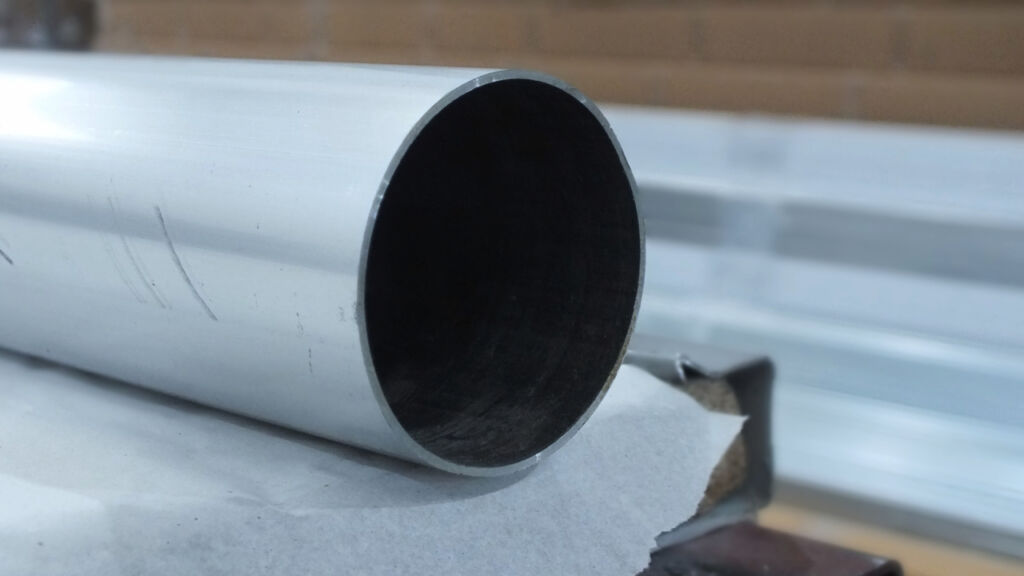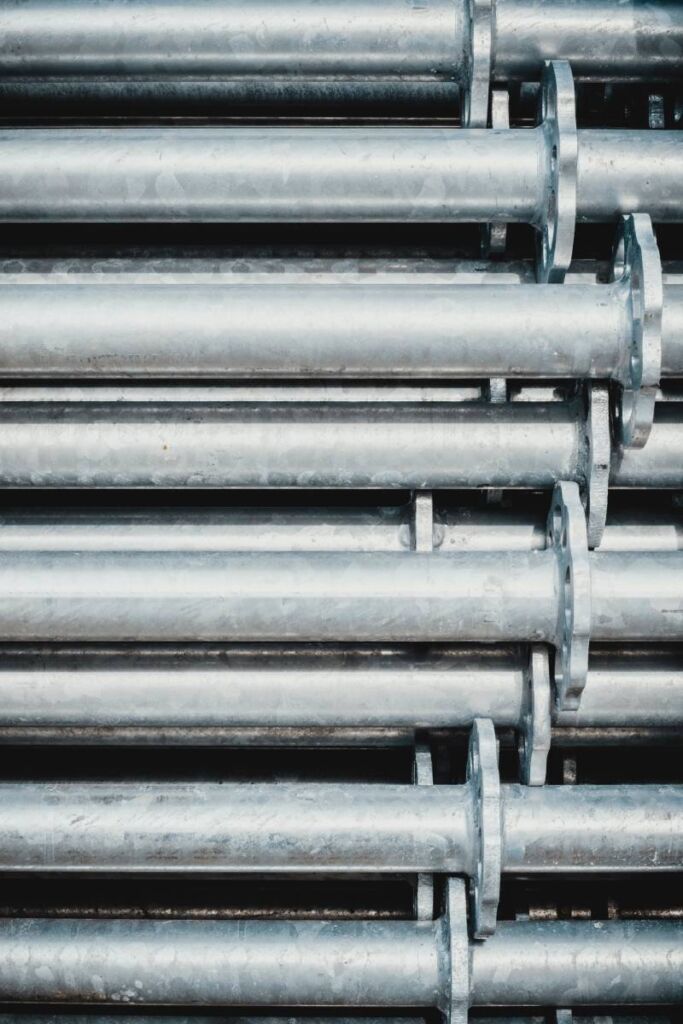Standard Tubes and Profiles

As Jalsan metal, we are involved in the production of standardized tubes and profiles that are designed for use in industrial settings.
Standard tubes and profiles refer to pre-designed and pre-manufactured metal or plastic structures that are used for a variety of industrial applications. These structures come in standardized sizes, shapes, and materials, making them easy to use and widely available.
Standard tubes and profiles are used in a wide range of industrial applications, including construction, automotive manufacturing, machinery, furniture, and more. They are often used as structural elements in these applications and can provide a cost-effective solution compared to custom-made structures. Additionally, standardized tubes and profiles can be easily assembled and disassembled, making them ideal for applications that require flexibility and adaptability.
The Use of Standard Tubes and Profiles
Standard metal tubes and profiles have a wide range of uses in industrial settings, including:
Structural Support: Standard metal tubes and profiles can be used as support structures in various applications, such as in building and construction, industrial machinery, and transportation equipment.
Framework: They can also be used as frameworks for building modular structures and frameworks for machinery and equipment.
Conveyor Systems: Metal tubes and profiles are commonly used in conveyor systems, such as in production lines, food processing, and packaging.
Manufacturing and Assembly: Standard metal tubes and profiles are used to create custom-designed fixtures, jigs, and templates used for manufacturing and assembly.
Signage and Display: Metal tubes and profiles are used to create signage, displays, and stands for promotional events, exhibitions, and retail displays.
Transportation: Metal tubes and profiles are used to create parts and components for various transportation equipment, such as bicycles, motorcycles, and automobiles.
Overall, the versatility, durability, and cost-effectiveness of standard metal tubes and profiles make them an essential component in many industrial applications.
The Dimensions of Standard Tubes and Profiles
The dimensions of standard tubes and profiles vary depending on the type of material and the specific application. However, many standard tubes and profiles come in specific shapes and sizes, which are standardized across different manufacturers.
Some common standard tube and profile sizes include:
Round tubes: Outer diameter ranging from 1/8 inch to 12 inches, with wall thicknesses ranging from 0.035 inches to 0.5 inches.
Square tubes: Outer dimensions ranging from 1/2 inch to 12 inches, with wall thicknesses ranging from 0.035 inches to 0.5 inches.
Rectangular tubes: Outer dimensions ranging from 1/2 inch to 12 inches, with wall thicknesses ranging from 0.035 inches to 0.5 inches.
C-channels: Various sizes with the shape of a “C” that is often used for structural support.
I-beams: Various sizes with the shape of an “I” that is also often used for structural support.
It’s important to note that the exact dimensions and tolerances of standard tubes and profiles can vary depending on the manufacturing process and the specific industry standards.
The Companies That Are Interested in Standard Tubes and Profiles
There are many companies that may be interested in buying standard tubes and profiles, depending on the specific industry and application. Here are a few examples of industries and companies that commonly use standard tubes and profiles:
Construction: Construction companies often use standard tubes and profiles as structural elements in buildings, bridges, and other structures.
Manufacturing: Manufacturers of machinery, equipment, and consumer goods may use standard tubes and profiles in the production of their products.
Automotive: Companies that manufacture automobiles, trucks, and other vehicles may use standard tubes and profiles in the production of chassis, frames, and other structural components.
Aerospace: Aerospace companies may use standard tubes and profiles in the production of aircraft and spacecraft structures.
Energy: Companies in the energy sector, including oil and gas, wind, and solar, may use standard tubes and profiles in the production of pipelines, wind turbines, and solar panel frames.
Furniture: Furniture manufacturers may use standard tubes and profiles in the production of tables, chairs, and other pieces of furniture.
Overall, any company that requires strong, durable, and versatile structural elements may be interested in buying standard tubes and profiles.

How to Provide Standard Tubes and Profiles?
Companies that are interested in buying standard tubes and profiles have a few different options for purchasing them. Here are some common ways that companies can buy these products:
Directly from manufacturers: One option is to purchase standard tubes and profiles directly from the manufacturer. Many manufacturers offer their products for sale online, through catalogs, or through sales representatives. This allows companies to order the exact sizes, materials, and quantities that they need.
Through distributors: Another option is to purchase standard tubes and profiles through distributors. Distributors typically carry a wide range of products from multiple manufacturers, making it easy for companies to compare and choose the products that best meet their needs. Distributors may also offer additional services, such as custom cutting or fabrication.
Online marketplaces: Online marketplaces, such as Alibaba, Amazon, and eBay, offer a wide range of standard tubes and profiles from multiple manufacturers and distributors. This allows companies to compare prices and products, and easily purchase the products they need.
Local suppliers: Depending on the industry and location, companies may be able to purchase standard tubes and profiles from local suppliers or fabricators. This can be a convenient option for companies that require quick delivery or custom fabrication services.
Overall, companies have multiple options for purchasing standard tubes and profiles, and the best option will depend on their specific needs and requirements.
How to Apply?
The application of standard tubes and profiles will depend on the specific industry and application, as well as the type of material and dimensions of the tubes and profiles. However, here are some common ways that standard tubes and profiles may be applied:
Structural support: Standard tubes and profiles are often used to provide structural support in buildings, bridges, and other structures. They may be used as columns, beams, or trusses to help distribute weight and support loads.
Frameworks: Standard tubes and profiles can be used to create frameworks for machinery, equipment, and other structures. This can provide a stable base for other components or equipment to be attached to.
Conveyors: Standard tubes and profiles may be used to create conveyor systems for material handling in production lines, food processing, and packaging.
Custom fixtures and jigs: Standard tubes and profiles can be used to create custom fixtures and jigs for manufacturing and assembly. This can help ensure consistent quality and accuracy in production.
Signage and displays: Standard tubes and profiles may be used to create signage, displays, and stands for promotional events, exhibitions, and retail displays.
Transportation: Standard tubes and profiles can be used to create parts and components for various transportation equipment, such as bicycles, motorcycles, and automobiles.
Overall, the application of standard tubes and profiles will depend on the specific needs and requirements of the industry and application. They can be cut, welded, and formed into various shapes and sizes to meet the specific needs of the project.

Lorem ipsum dolor sit amet, consectetur adipisicing elit, sed do eiusmod tempor incididunt ut labore et dolore magna aliqua. Ut enim ad minim veniam, quis nostrud exercitation ullamco.
Lorem ipsum dolor sit amet, consectetur adipisicing elit, sed do eiusmod tempor incididunt ut labore et dolore magna aliqua. Ut enim ad minim veniam, quis nostrud exercitation ullamco.


